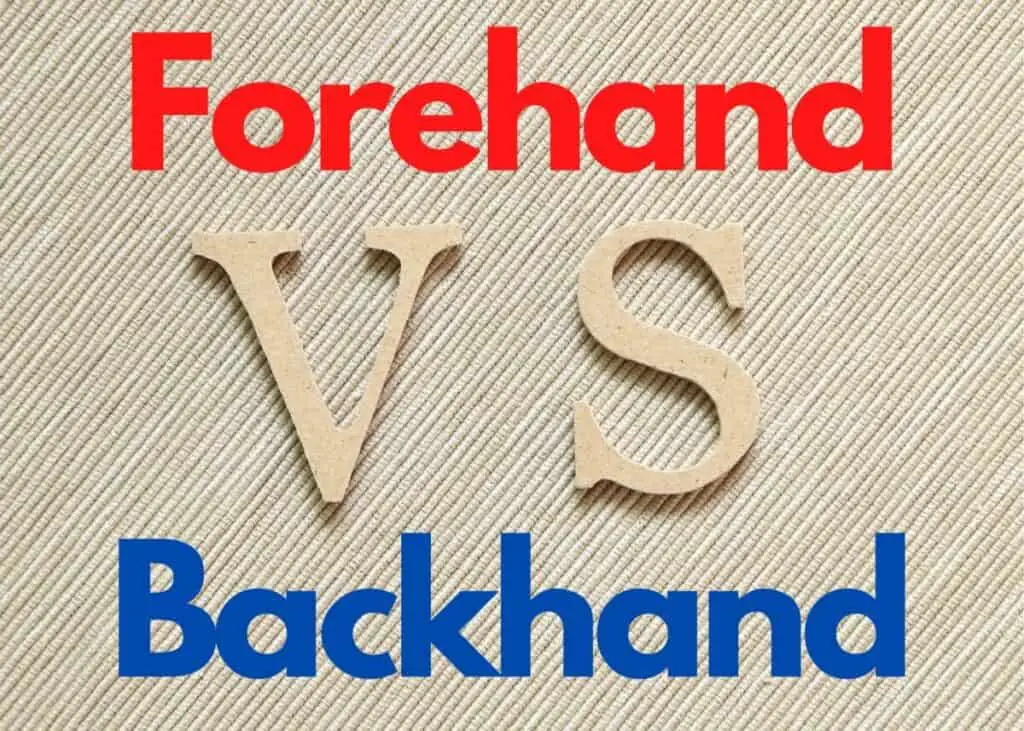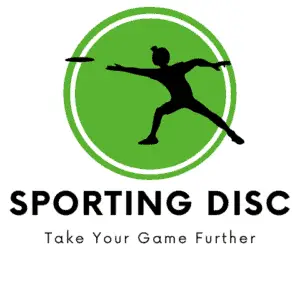In disc golf, some people are natural at throwing a forehand or a backhand style. But, I’ve wondered if one or the other is better overall?
Let’s look at the difference between a forehand and a backhand, and when you should use each to determine which is the better throw.
Table of Contents
Is Forehand or Backhand Better For Disc Golf?
Forehand throws are better for short-distance or when obstacles are present. A backhand throw is better for driving and long-distance shots. Both a forehand and a backhand can be good options for certain throws and situations. A player’s skill level and experience will dictate which is better for disc golf.

What is the Difference Between the Forehand and Backhand?
The difference between forehand and backhand throwing motions is obvious and easy to spot. But below are some more in-depth explanations as to what makes them different.
Knowing how they are different in detail can lead to a better understanding of how and when each throw should be used.
Arm Extension
When throwing backhand, arm extension is key to generating force and throwing the disc for distance. Full arm extension also creates a flat and level line for the disc to travel.
This is opposed to the forearm throw, where your arm won’t extend as far back and you’re leading with your elbow through the throwing motion.
Grip on Disc
The grips used for backhand and forehand are different too.
Backhand grips include:
- Power Grip: Used for driving
- Modified Power Grip: Distance and more accuracy
- Fan Grip: Putting and approach shots
- Modified Fan Grip: Approach shots and fairways
Forehand grips include:
- Power Grip: Driving and fairway shots
- Stacked Grip: Fairway drives and midrange
- Split Grip: Approach, fairway, and midrange throws
Throwing Form
A forehand throwing form won’t include the full reach back and arm extension of the backhand throw as discussed earlier, this means less distance and power on the throw.
When throwing forehand your elbow will be leading through the throw and less power will be transferred through the legs and hips.
The backhand throw uses a lot of power that’s generated through the legs and loading of the hips. Below is a good explanation of the backhand throwing form used in disc golf.
When to Use the Backhand Throw
1. Throwing For Distance
If you’re teeing off on a par 4 or par 5, you’re going to want to get some distance on the drive to start with.
The best throw for this situation is going to be the backhand. Most people will always drive using a backhand because you’re able to use more of your lower body and arm extension to power the disc down the fairway.
2. When you Need to Fade Left
A righthand backhand thrower will see their disc fade to the left at the end of the flight.
If you’re throwing on a hole that doglegs to the left, throwing a neutral or overstable disc backhand is a good shot for fading to the left at the end of the throw.
3. Reduce Off-Axis Torque
More often than not, the forehand will flutter, or wobble more when released than will a backhand throw.
Off-axis torque or OAT is a complicated way to say that there is some force being applied to the disc that does not allow for clean rotation of the disc.
In the case of disc golf, that force is usually up or down on the disc. That force will destabilize and create that familiar fluttering when the disc is thrown.
This up or down force on the rotating axis of the disc is what causes the wobble in the air.
A disc that is flying off-axis will flutter in the air. This fluttering or wobbling is bad because it will destabilize the disc while in flight, create drag, and cause the disc to be more or less overstable than it would if it was thrown cleanly.
A disc can wobble when driving, laying up, or on any type of throw. Off-axis torque can affect your game from driving to putting.
When to Use a Forehand Throw
1. When You Need to Fade Right
A right-hand backhand thrower will naturally finish their throws to the left as the rotation of the disc slows through the air.
If you’re more comfortable throwing an overstable or neutral disc, the tendency for the disc to finish to the left will be even more so. An overstable disc will always turn in the opposite direction of the spin of the disc. So, for an RHBH thrower, this means fading to the left.
If you’re faced with a shot where the course includes a dog ear to the right, throwing an overstable disc RHBH isn’t a great play.
This is when a forehand throw can help. A forehand is perfect for a disc that needs to finish to the right at a distance of fewer than 250 feet.
2. Getting Out of Trouble
At times you might find that you’re in a tough spot with an awkward throwing angle. Having the ability to throw backhand or forehand can give you a few more shot options and increase the chances of getting out of trouble and back into a good lie on the course.
Using an overstable disc with a forehand shot can also make the disc fly in an “S” shape when thrown at the right angle.
Perfecting these angles along with the right disc and an overstable disc can open up your game and make you an all-around better player.
3. Using a Very Overstable Disc
Throwing this same disc forehand could help the disc to fly a little more flat without as much fade to the left.
4. Forehand Throwing is More Natural
Some athletes with a background in other ball sports like baseball, softball, or football might be more accustomed to the motion of the forehand throw.
Even these players probably won’t be able to throw the forehand as far as a backhand when it comes to driving, but having a good forehand shot that you’re comfortable with can be useful on the course in certain situations.
The problem with a forehand throw even for players who are more comfortable with the forehand motion is to get the proper amount of snap on the disc when thrown.
Can You Throw a Backhand or Forehand For More Distance?
When it comes to pure distance from a teeing area 9 times out of 10 the backhand throw will fly for more distance than the forehand throw.
The backhand throw will engage more of a player’s core and lower body. The windup during a backhand drive loads the hips and creates more power for a backhand throw.
During a forehand throw, you’ll lead more with the elbow with less leading of the hips. So, not as much power will be coming from the lower body on the shot.
What is a Good Distance to Throw Forehand?
For a majority of players, the max distance they can throw the forehand will be from 200 to 350 feet in distance.
For comparison, many pros can throw a backhand 450-500 feet.
Final Thoughts | Is Forehand or Backhand Better?
Asking if the forehand or the backhand is the better throw is most likely the wrong question. The better question to ask is which throw will be better suited to the hole you’re playing and the situation.
Both throws have their advantages, and learning to throw both forehand and backhand can be a big advantage to any player.
